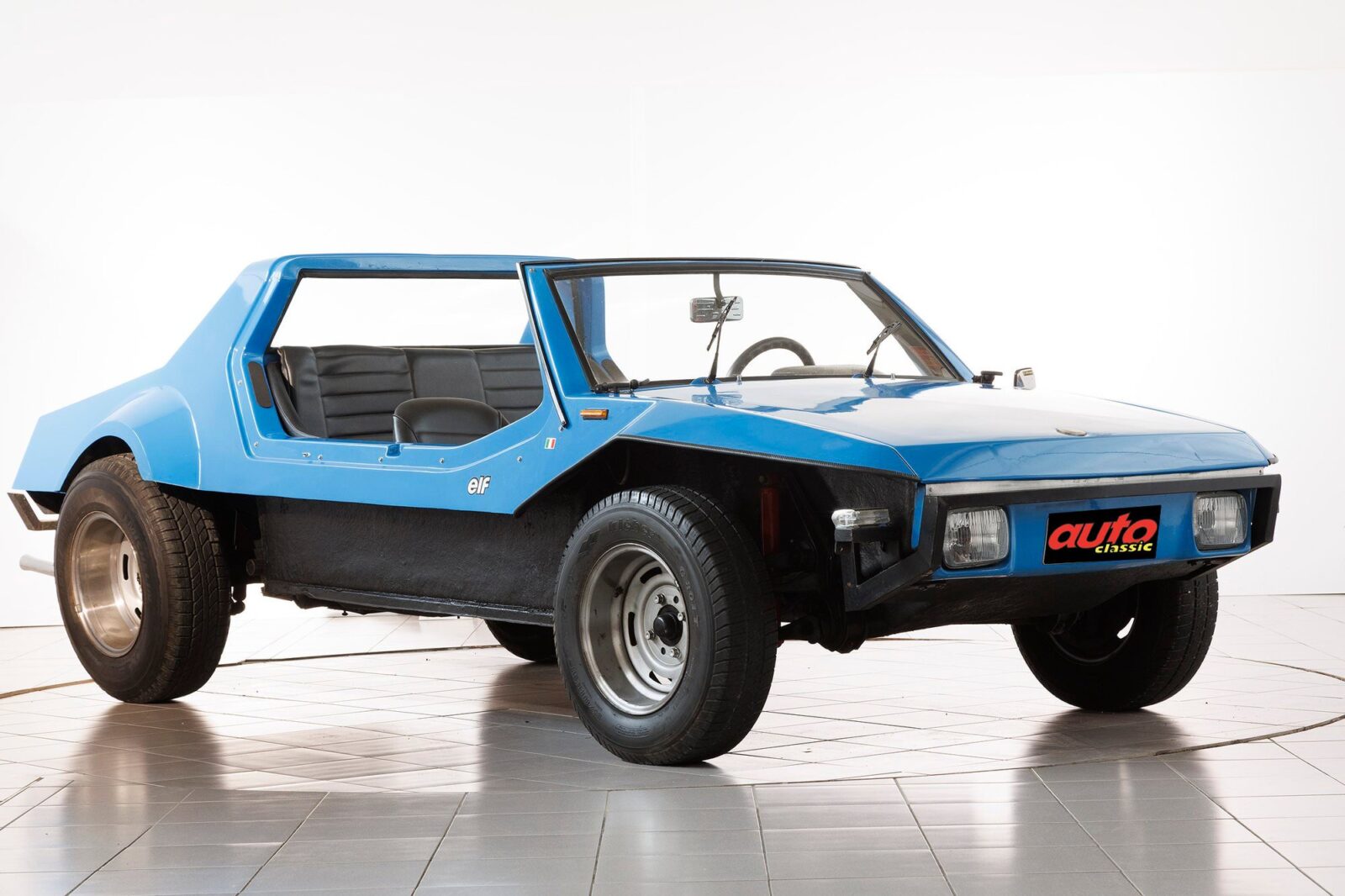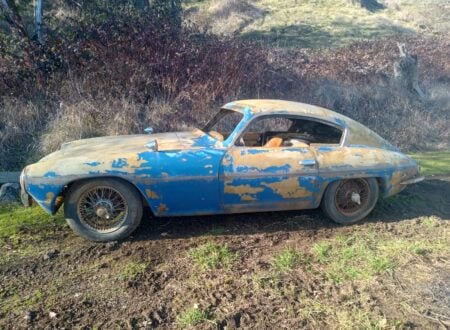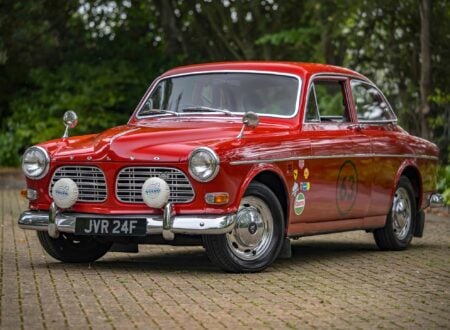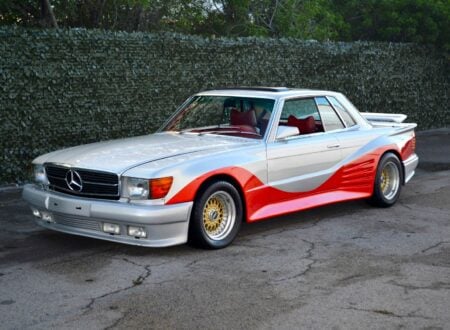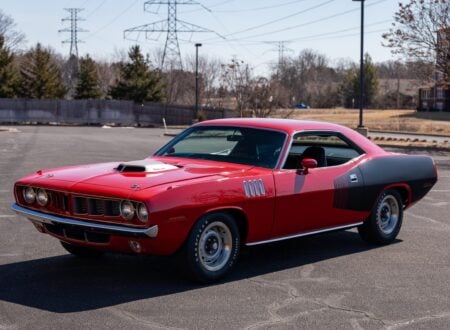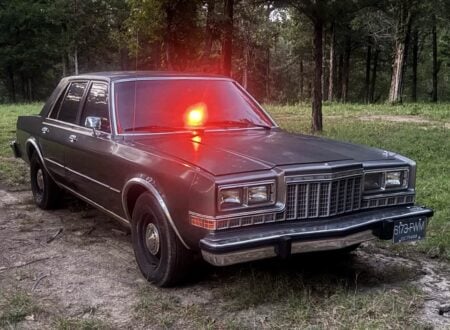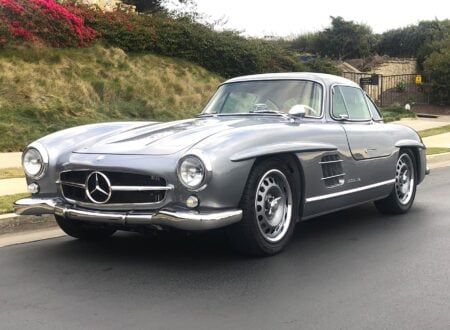This is an Autozodiaco Damaca dune buggy from 1977, it was designed by the great American stylist Tom Tjaarda who also designed the DeTomaso Pantera and many others.
The Autozodiaco Damaca was developed in the late 1960s with strong influence from the Meyers Manx dune buggy driven by Steve McQueen in The Thomas Crown Affair. Unlike those who just copied the Manx design, the Damaca was a completely unique VW-based buggy that counted many European celebrities of the time as its fans.
Fast Facts – The Autozodiaco Damaca
- The Autozodiaco Damaca, designed by Tom Tjaarda, was a unique VW-based dune buggy created in Italy in the late 1960s, inspired by the Meyers Manx and Steve McQueen’s buggy in The Thomas Crown Affair.
- Italian entrepreneur Mario Zodiaco founded Autozodiaco after falling in love with dune buggies, ultimately building his own prototype and navigating bureaucratic and financial challenges to start production.
- Autozodiaco faced setbacks, including a dispute with a key financier, but Zodiaco secured partnerships and continued to produce multiple dune buggy models, gaining popularity among European celebrities.
- Tjaarda’s Damaca stood out for its angular, 1970s design, four-seat capacity, and lightweight fiberglass body – making it both distinctive and surprisingly practical. Surviving models only come up for sale rarely.
The Incredible Story Of Autozodiaco
The story of Autozodiaco is worthy of its own Netflix series, it involves a Hollywood movie, a world famous car designer, a playboy millionaire, a hardworking entrepreneur, and the story of a business that would succeed against long odds.
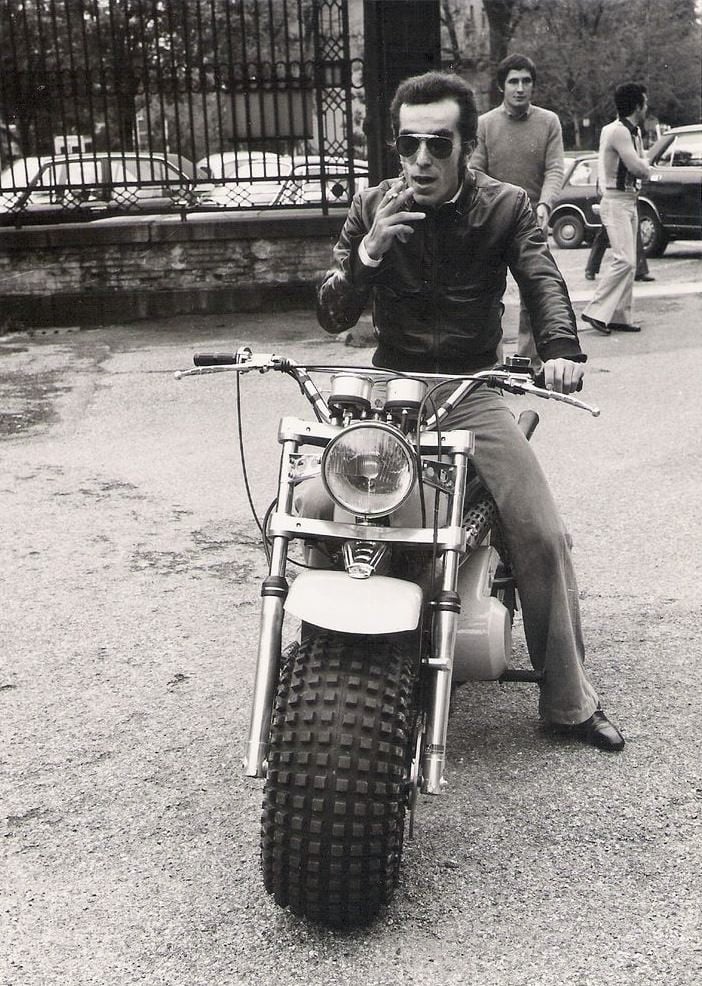

The tale begins with an Italian man named Mario Zodiaco who wandered into a theatre in 1968 not knowing that the film he was about to see, The Thomas Crown Affair, would change the course of his life. Mario fell in love with the scene in the film with Steve McQueen and Faye Dunaway in a Meyers Manx dune buggy, a specially built example that used a Corvair engine at the insistence of McQueen himself.
Mario would return to that same theatre and see the film another four times. The dune buggy had captured his imagination and he swore to himself that he would have one of his own just as soon as he could manage it.
Not long after this, he left his family business behind and started his own business buying and selling cars. It was around this time that he ordered a Meyers Manx buggy clone from California, a kit car that he would then build himself using a shortened VW Beetle chassis in Italy.
The cost of this endeavor nearly bankrupted him, but he completed the build and took the car out for its first drive on Italian roads. The wind in his hair, the feeling of freedom, and the spritely performance of the lightweight car made him fall in love with it all over again.
He returned home and parked the car on the street before going inside. A short while later he heard a cacophony of horns and voices outside, thinking there had been an accident he ran out only to find the street blocked by people staring at his dune buggy – and blocking the traffic for some rather irate Italian drivers.
Mario quickly realized that he wasn’t the only one who loved buggies, and that there was a latent market for them in Italy. He resolved to design his own Beetle-based dune buggies, build them in Italy, and sell them in Italy and across Europe.
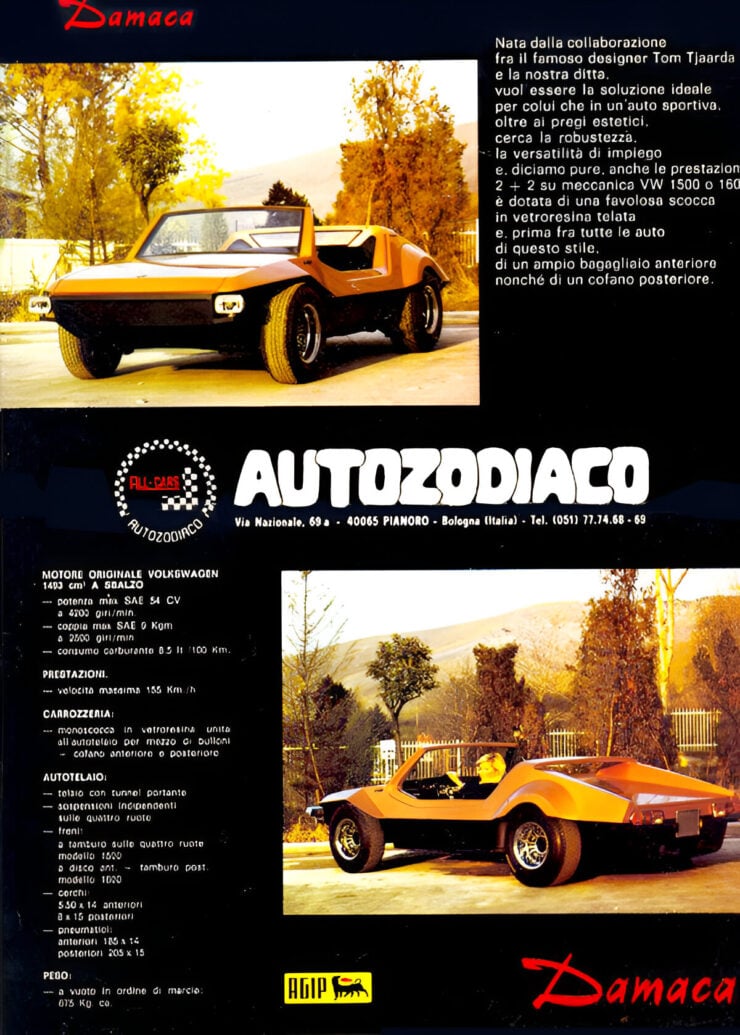

The Creation Of Autozodiaco Srl
He established the firm Society Autozodiaco Srl after partnering with Beppe Seragnoli, the owner of a company named Marivan that built fiberglass sailboats. Beppe had what Mario needed more than almost anything else – expertise in the use of fiberglass molding and construction.
Mario developed his prototype and completed the design, he would show it to the world for the first time in 1969 at the Turin Auto Show where it received an incredible tsunami of interest from attendees, including a significant number of celebrities from the world of sports, music, and film.
The first roadblock that would stop the project dead in its tracks was Italian government bureaucracy. The formal approval for the VW Beetle-based buggy was denied on safety grounds. Mario made his way to Rome and spent days pouring over official records, he succeeded in finding a loophole, and his design was given the green stamp of approval shortly after.
The Playboy And The Theft
Autozodiaco now had 109 orders for cars, including deposits, but insufficient funds to put the design into series production. Additional funding was sourced from Paolo Pazzaglia, the son from a wealthy Bolognese family and an avowed playboy.
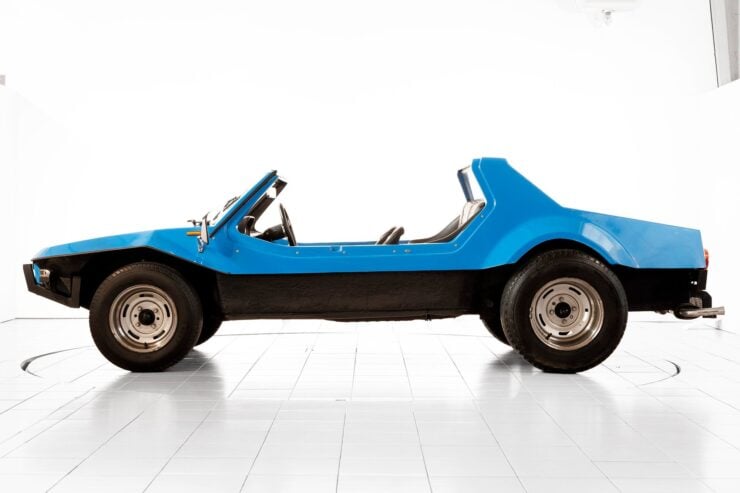

With the funds in place the production process could begin. This is where things began to sour, with Paolo badmouthing the company in the press despite his own significant financial stake. He was bought out and left, but not before taking the first prototype with him.
The police were called, and the prototype was recovered, it’s thought he may have been planning to start his own company and reverse engineer the design.
Autozodiaco Production Begins
Mario was once again facing disaster, he managed to secure a partnership with Giannini, a small Italian firm that modified Fiat 500s. With his lengthy order book in hand, he was finally able to begin fulfilling orders and shipping out completed road legal dune buggies.
Over the coming years he would release a number of designs including the Autozodiaco Deserter, Autozodiaco Jumper, Autozodiaco Squalo, Autozodiaco California, the unusual Autozodiaco Škoda Kirby, and the car you see in this article, the Autozodiaco Damaca.
All of these cars, bar the Autozodiaco Škoda Kirby, were based on Volkswagen mechanicals and had fiberglass bodies. They were offered in both kit and completed turn-key form. By far the most revolutionary design was the Autozodiaco Damaca, it took no styling cues at all from the California dune buggies and it offered a more modern, and much more 1970s, appearance.
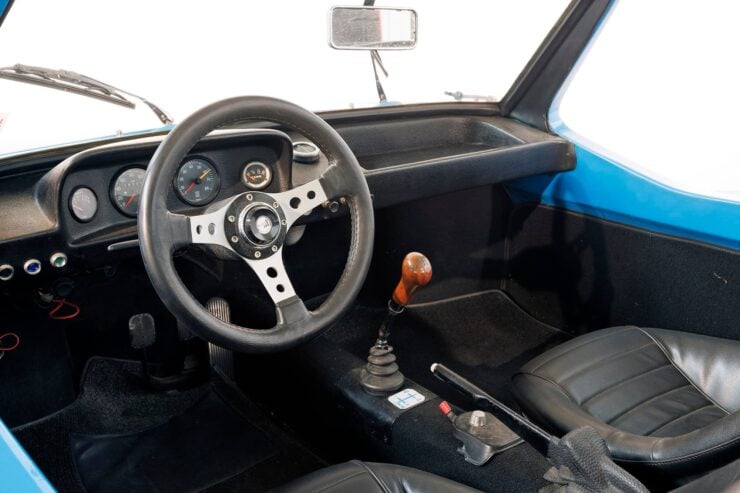

The reason for the car’s unique styling is that it was penned by none other than Tom Tjaarda, a legendary American designer who also created the Ferrari 330 GT 2+2 Pininfarina, Ferrari 365 California, Serenissima Coupé, Lancia Fulvia 1600 HF Competizione, De Tomaso Pantera, Ford Maverick, and dozens of others.
Over the years that followed, Mario would continue building cars under the Autozodiaco name and he would come to rub shoulders with some of the true greats of the industry including Giacomo Agostini, Niki Lauda, and Renato Molinari.
He’s said to have closed the company down in 1981 and taken off in a yacht to sail the world, eventually settling in Panama where he lived for many years – possibly living out The Thomas Crown Affair dream from all those years earlier of driving a dune buggy across abandoned beaches.
The Autozodiaco Damaca
Tjaarda’s design for the Autozodiaco Damaca had an altogether more angular look with a fiberglass body that has a fixed windscreen, a fixed targa-type bar, seating for four, and a semi-wedge profile. Production began in 1970 and it’s not known exactly how many were made.
The Damaca had a curb weight of 675 kgs, 1488 lbs, and a top speed of almost 100 mph – although this top speed was dependent on the engine used. Most used either the 1.5 or 1.6 liter Volkswagen flat-four, though there’s no reason a larger displacement Beetle engine couldn’t be used to further improve performance.
Unlike most Beetle-based dune buggies, the Damaca used a normal Beetle chassis and not one that had been shortened. This is why it had four full seats, making it more practical than its two seater siblings in the Autozodiaco model range.
The Damaca had an opening front hood, or frunk, it has twin rectangular headlights, two windshield wipers, and a flat deck rear with an opening engine lid for easy access. Luggage area was sparse, but a snap-on soft top for the targa roof was available as an accessory.
We only very rarely see surviving examples of the Autozodiaco Damaca come up for sale now, and they represent a little-known Tom Tjaarda design that still gathers crowds wherever it parks today, 53 years after it was first released.
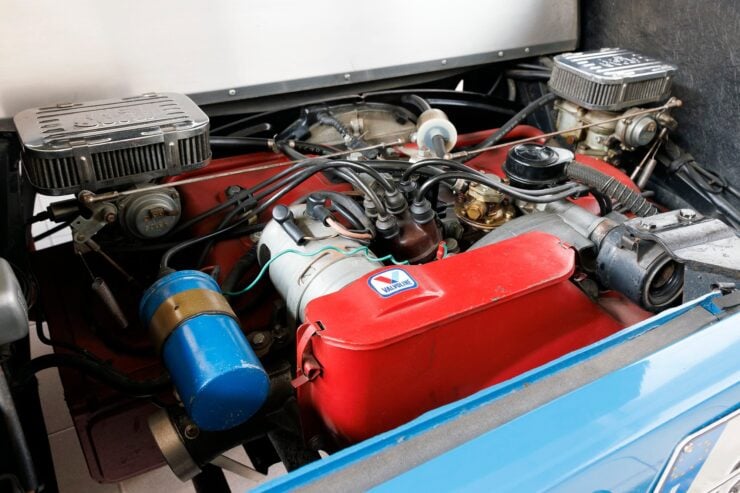

The Damaca you see in this article is currently being offered for sale out of Italy. It comes with Italian registration and papers, it’s finished in blue over a black interior, it has silver steel wheels, and it’s left-hand drive.
If you’d like to read more about this unusual dune buggy or enquire about buying it you can visit the listing here. It currently doesn’t have an asking price listed, but there is the option to contact the seller by phone or email.
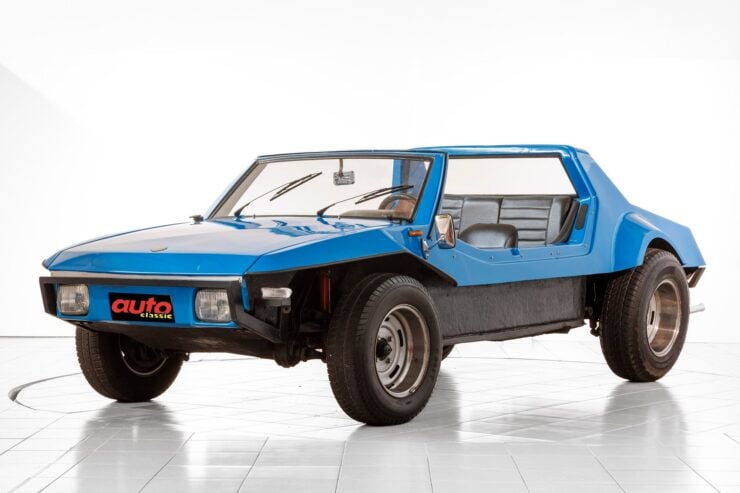
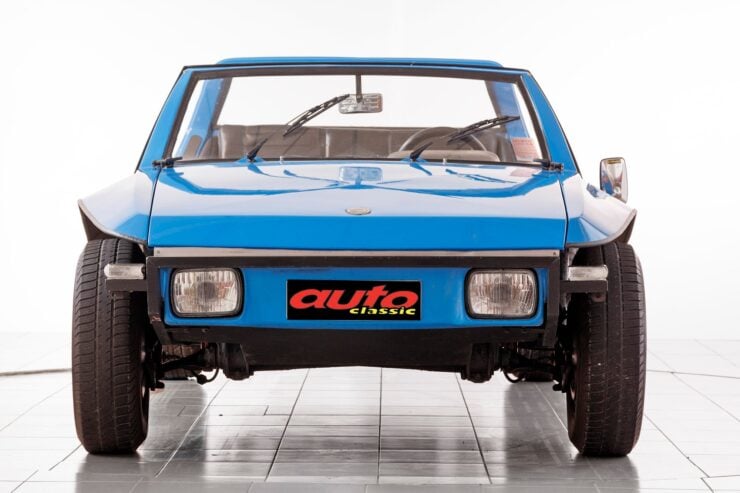
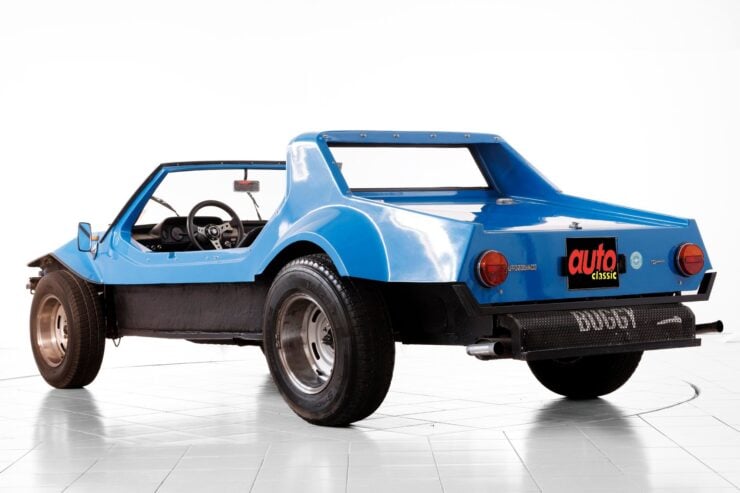
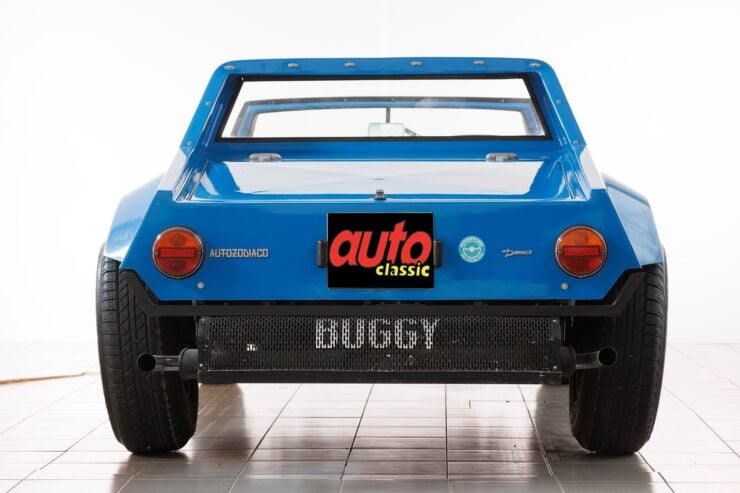
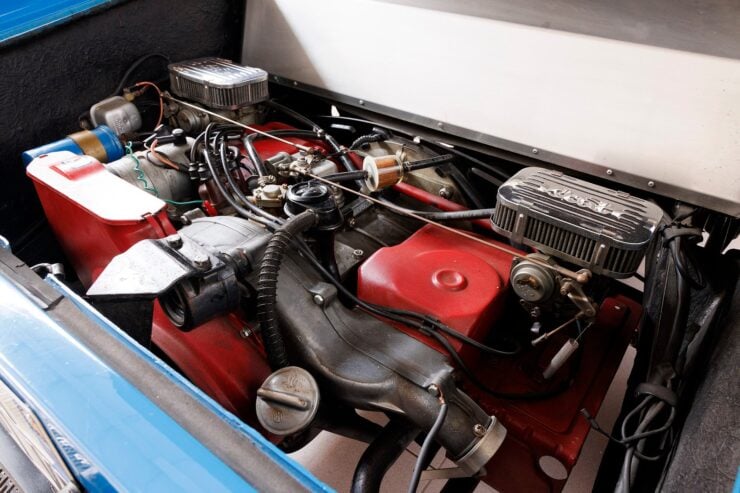
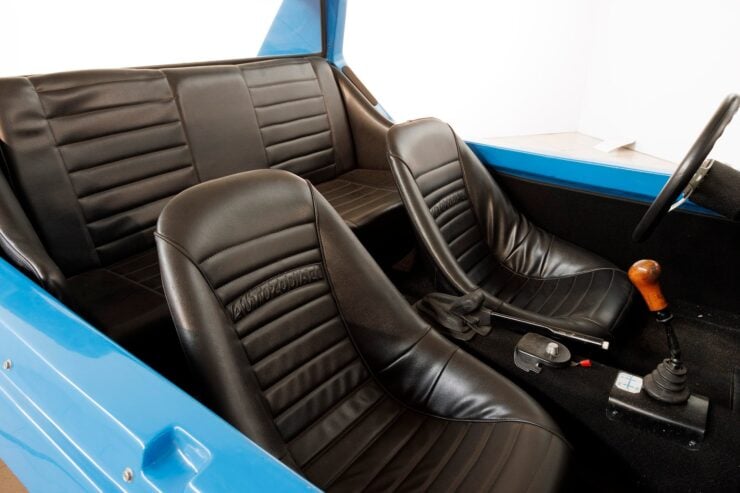

Images courtesy of Car & Classic

